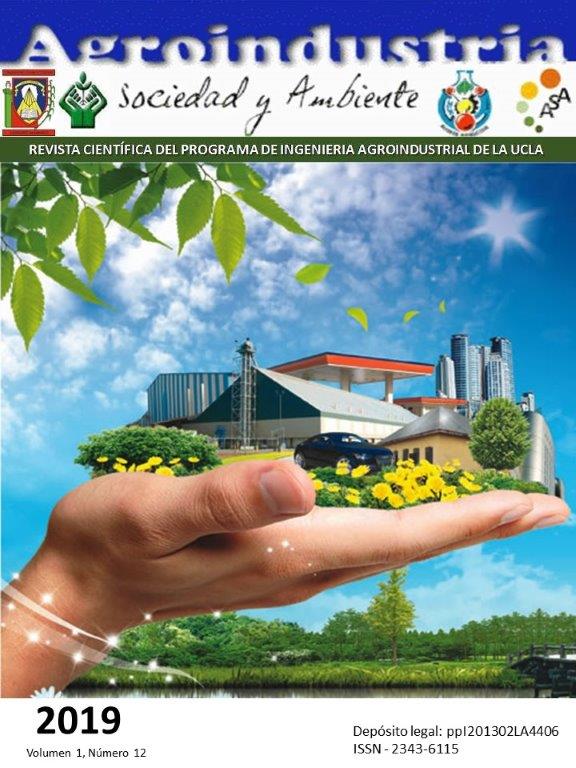Obtaining trementine and rosin from the pine resin. State of art
Keywords:
Turpentine, rosin, colophony, pine, patents, technological intelligenceAbstract
Pine resin is a substance rich in mono and diterpenes, susceptible to polymerization reactions, which can be separated into two fractions: turpentine and rosin, which are widely used in the formulation of products, mainly in the adhesives industry, inks, tires, pharmaceutical, etc. Previous research has developed a resining method that does not alter the ultrastructure characteristics of Venezuelan Pino Caribe. In that sense, it is important to determine and evaluate the available technologies for obtaining turpentine and rosin. For this, a technological intelligence work was developed through the search and analysis of patents, where it was identified that steam distillation combined with stripping columns is the most developed, highlighting China and the United States as leading countries. This information can contribute to the decision making that will drive the development of the Forest Industry in our country.
Downloads
References
Bathia, S. (2016).Global Impact of the modern Pine Chemical Industry. [En línea]. Pine Chemical Association Inc. Disponible: http://c.ymcdn.com/sites/www.pinechemicals.org/resource/resmgr/Studies/PCA-_Global_Impact_of_the_Mo.pdf [Consulta: 15 de julio 2018].
Belgacem, M. and Gandini, A. (2008).Surface Modification of Cellulose Fibres. En M. Belgacem, andA. Gandini. (Dirs).Monomers, Polymers and Composites from Renewable Resources.(pp. 385-400). Amsterdam: Elsevier, ISBN 978-0-08-045316-3.
Cline, M. (1943).Apparatus for the treatment of crude oleoresinsUS2328891.Oficina de Patentes de los Estados Unidos.
Fan, Y. y Huang, W. (2012). CN102527107A. Oficina Estatal de Propiedad Intelectual de la República Popular China.
Maiti, S., Sabyasachi, S.,Achintya K.Kundu(1989). Rosin: A Renewable Resource for Polymers and Polymer Chemicals. Progress in Polymer Science, Vol (14): 297-338.
McConell, N., Mims, L., Poole, H., Lanier, H. (1950). Flash distillation of turpentineUS2500194A. Oficina de Patentes de los Estados Unidos.
Minying, M. (2016) CN205699520. Oficina Estatal de Propiedad Intelectual de la República Popular China.
Neng, L. (2015). CN205199008U. Oficina Estatal de Propiedad Intelectual de la República Popular China.
Organización Mundial de la Propiedad Intelectual (OMPI) (2018). Clasificación Internacional de Patentes. Suiza.
Panda, H., Handbook on Oleoresin and Pine Chemicals. Delhi: Asi Pacific Business Press Inc., 2008. ISBN: 81-7833-019-9.
Potter, F. (1975)An industrial steem distillation: Separation of rosin and turpentine from pine gum.Journal of Chemical Education.52(10): 672-673.
Qigui, C. (2015). CN204237734. Oficina Estatal de Propiedad Intelectual de la República Popular China.
Reed, J. (1941). Production of rosin and turpentine US2363692.Oficina de Patentes de los Estados Unidos.
Reed, J. (1944). US2363692. Oficina de Patentes de los Estados Unidos.
Reed, J., Smith, W., Veitch, F. andShingler, G. (1941).Process for gum refiningUS2254785.Oficina de Patentes de los Estados Unidos.
Shearon, W., Patton, E. andShingler, G. (1948).Continuous Distillation of Gum Turpentine.Industrial and EngineeringChemistry. 40(9): 1695-1700.
Vicerrectoría de Investigación y Desarrollo. Universidad de Chile. (2011).Manual de Vigilancia Tecnológica: Vigilando las fronteras tecnológicas. Santiago de Chile: Universidad de Chile.
Visconti, A. (2013).Gum Rosin, a renewable and precious, industrial raw material: Will it last forever?. En: Pine Chemicals Association Conference. Barcelona.
Wuzhou Sun ShineForestry and Chemicals (WSSFC) (2018).[En línea]. Disponible: http://www.wssfc.com/en/about.aspx?BaseInfoCateId=105&CateId=105. [Consulta: 19 de julio 2018].
Xiaopeng, C. (2015). Active gas tangent jet spin type rosin distillation device and its use.CN105199607. Oficina Estatal de Propiedad Intelectual de la República Popular China.
Yaoming, L. (2011). CN102258951A. Oficina Estatal de Propiedad Intelectual de la República Popular China.
Yongxing, P. (2014) CN104231939. Oficina Estatal de Propiedad Intelectual de la República Popular China.
Published
How to Cite
Issue
Section




